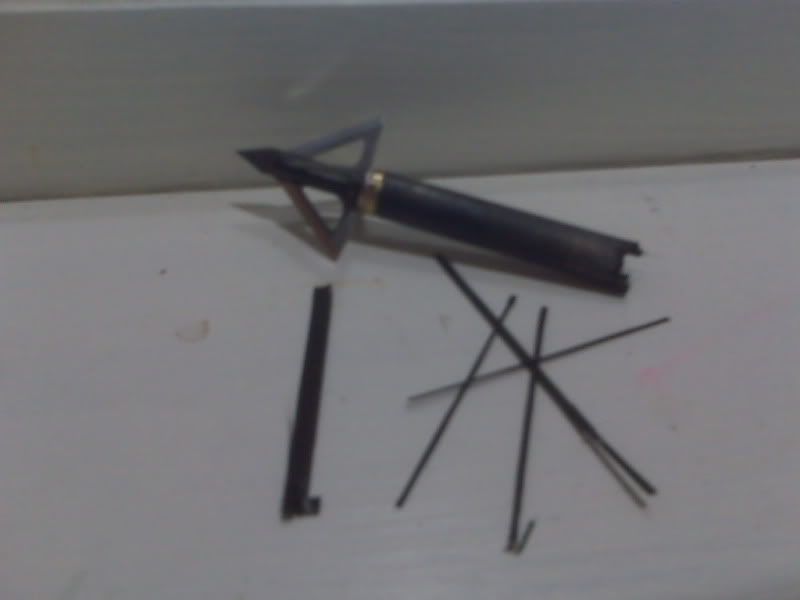When carbons were first offered for the Excaliburs I read the posts of how tough they are and the "they're either straight or their broke" comments. I bought 6 GoldTips to try. One of them was not straight, but had a bit of curve to it and did not shoot well. I laid it aside for my "unloading arrow".
I put the others in my quiver (after carefully testing accuracy) for hunting.
One day I got to my stand and started attaching gear to the haul up lines. When I took my hip quiver off my belt I noticed one of the arrows had broken and all that remained in my quiver was about 15 - 16" of shaft and the broadhead! The fletched end was gone! I didn't fall down or run into anything on my walk in, so why did it break? If I'd snagged it on a vine or brush, why didn't it just pull out of the soft rubber clip the quiver uses and fall out? Checked the rest of my arrows and all seemed fine.
A few weeks later I shot a doe with one of them. I was on the ground when I shot and it was late evening, so all my efforts went into recovering the doe and getting her out of the woods, tagged, and in the cooler. Next day I went back to look for my arrow and found the back 2/3 of it. It had broken and the broadhead was gone. Looked like a fairly clean break, but I looked closely for any fragments in the meat when we butchered the deer (and found nothing).
That's when I switched back to aluminum arrows!
They may bend if shot into hard objects or pulled carelessly from targets, but if you are reasonably careful they last a long time. I'm still shooting the same bunch of 2215s I made up 3 years ago. I think I have damaged 3 of the original 15 or so in that batch. One was from a hit from another arrow, one was when I put it through a deer, and one was from shooting a rotten stump to unload (the arrow went through the stump and deflected off the ground).

I also use a trick I discovered to check straightness if I make a shot I think had a risk of bending one. I use a point insert on both ends, so I can simply unscrew the point & look through the shaft like you would a telescope with it pointed at a light source. The interior of the shaft is reflective, and when I look through it looks like a "bullseye" target from the effects of the light. If it's bent the uneven "rings" being reflected are obvious!
Carbons seem to work fine from my vert bows, but for the crossbow I want something I trust, and the failure rate I had with carbons led me back to aluminum.

